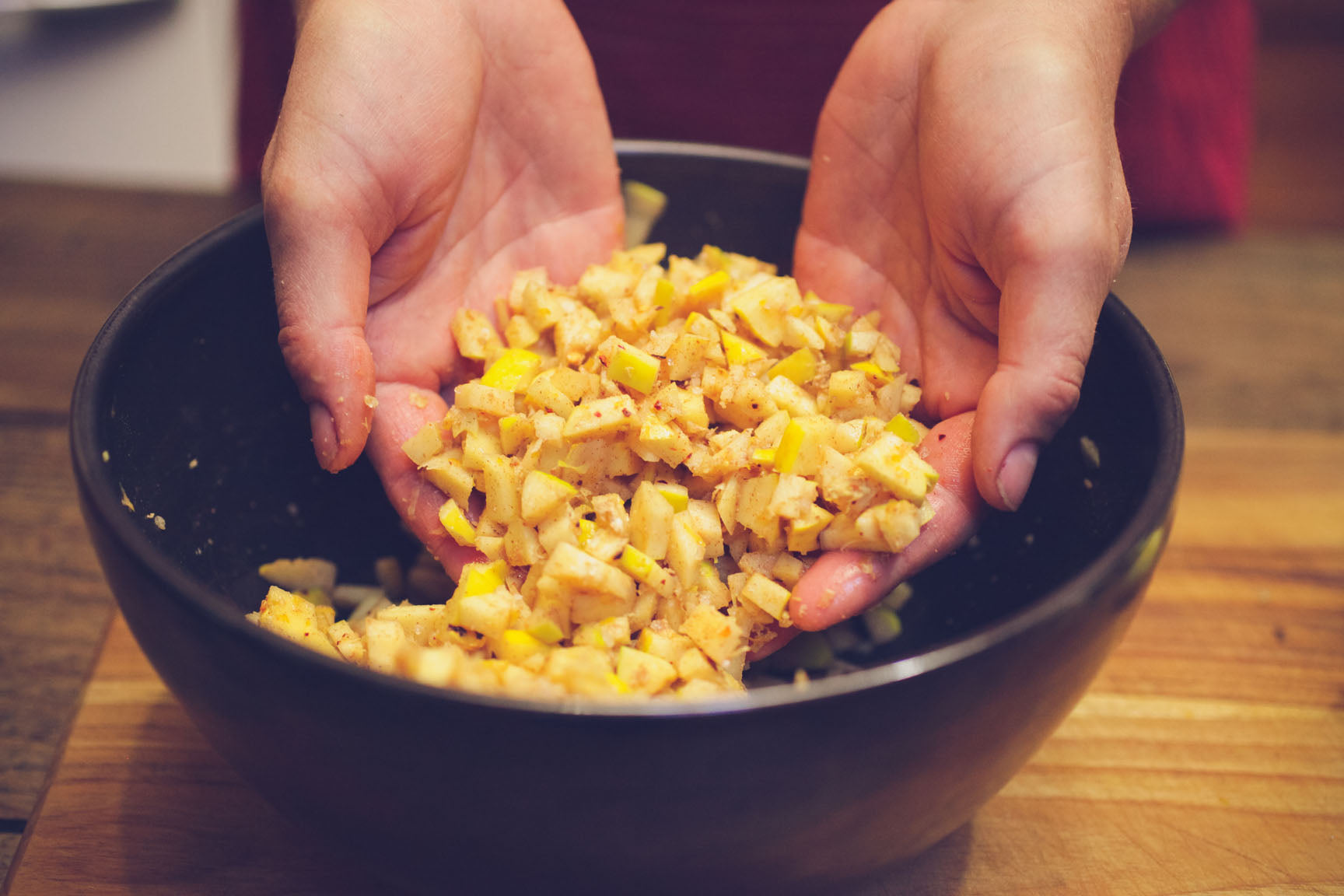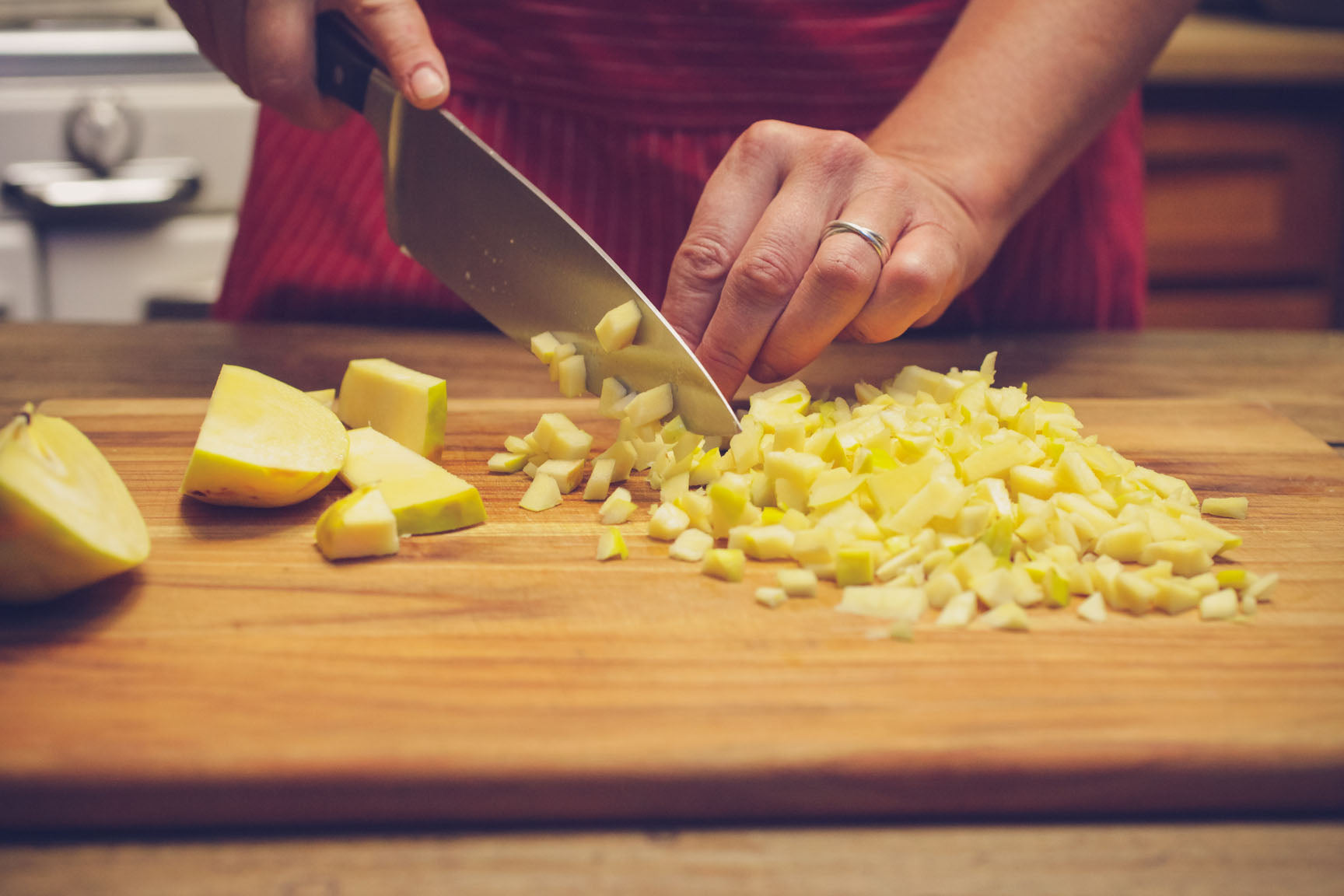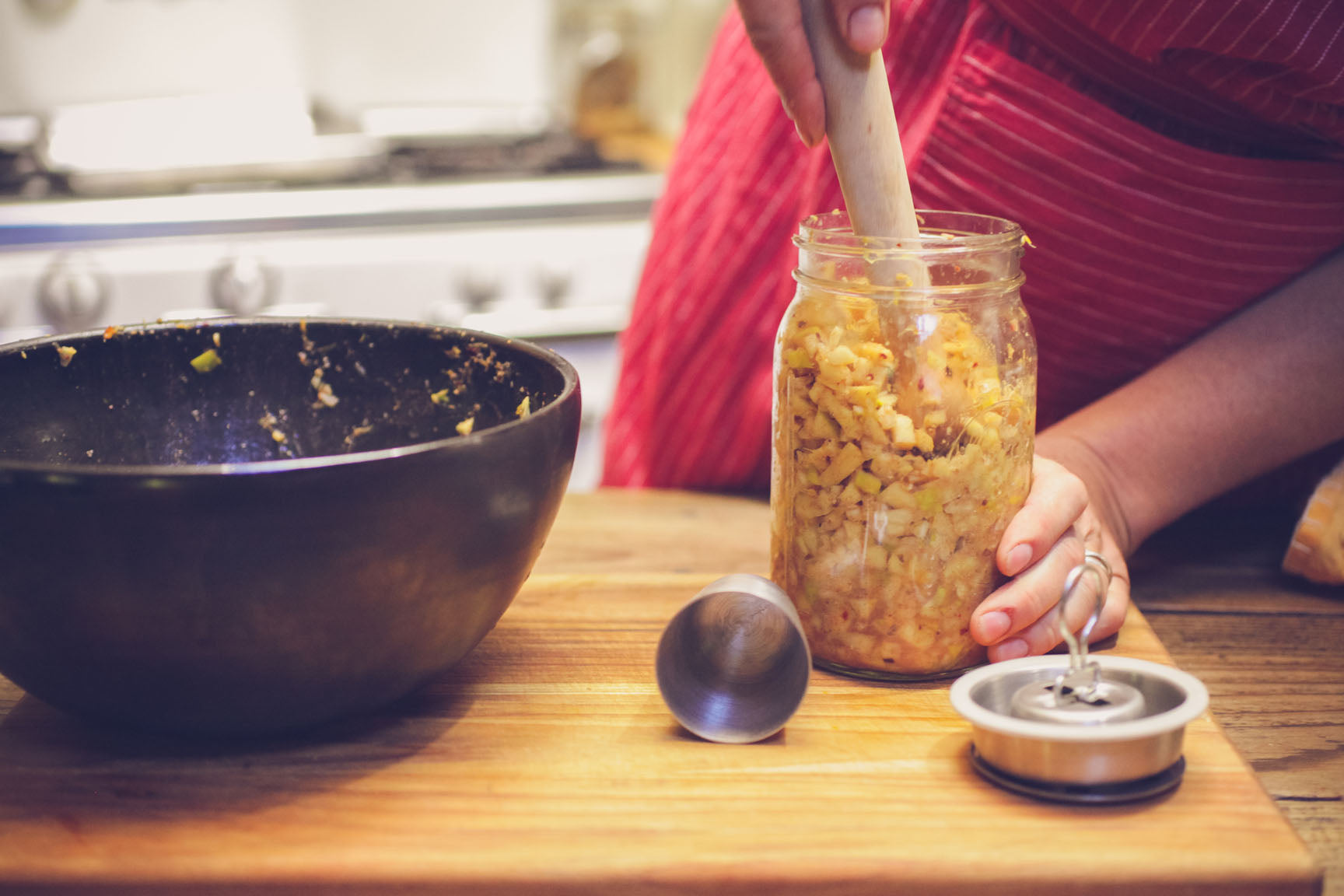- Continue Shopping
- Your Cart is Empty
Hot Cinnamon Quince Ferment

What You'll Need
Ingredients
- good kitchen knife and clean cutting surface or food processor
- medium mixing bowl
- measuring cups and spoons
- clean wide mouth quart jar
- muddler or pickle packer
- KrautSource jar top fermentation kit
- wide mouth lid for storage
Ingredients
- 2 pounds quince, defuzzed, cored, and chopped
- zest and juice of 1 lemon
- 1 tablespoon salt
- 2 teaspoons fresh grated ginger
- 1 1/4 teaspoons ground cinnamon
- 1 teaspoon chile flakes
- 1/2 teaspoon finely ground white pepper

Directions
Rub the quince to dislodge the fuzzy outer covering and reveal a gleaming yellow skin beneath.  Chop the quince into slices, removing the core, and then chop it evenly into small cubes, about 1/4” in diameter. (You can use a food processor for this, too.)
Chop the quince into slices, removing the core, and then chop it evenly into small cubes, about 1/4” in diameter. (You can use a food processor for this, too.) Transfer the pea-sized quince bits into a bowl, and add the lemon zest and juice, salt, ginger, cinnamon, chili flakes, and white pepper.
Transfer the pea-sized quince bits into a bowl, and add the lemon zest and juice, salt, ginger, cinnamon, chili flakes, and white pepper. Mix well. If you can, let the mixture sit for 10 minutes; the salt will work its way into the quince and release more of the juices to make a better brine.
Mix well. If you can, let the mixture sit for 10 minutes; the salt will work its way into the quince and release more of the juices to make a better brine.
Pack the mixture into a clean quart jar, pressing out air pockets as you go. This is a good use for a cocktail muddler, which will pack it down tight enough to make the scant brine cover the top of the fruit.
Use a weight to press the full jar of quince down beneath the brine. If you need to, squeeze a bit more lemon juice over the top, to get just enough liquid to cover. We like to use the Kraut Source for this particular ferment because the spring-loaded press does a great job pushing the quince down beneath the brine.
Set the jar in a cool dark part of the kitchen, and monitor as it progresses. If air pockets develop, press the fruit back down to release trapped air.
Allow to ferment 14-21 days, or until the desired flavor is reached. The end result is fruity, spicy, sparkling. The longer it ferments, the more sour it becomes.
When you like the flavor, screw on a lid for storage and transfer to the refrigerator, where it will keep for up to 12 months.
Serve with turkey and roasted roots, or as a topping on salad with persimmon and walnut.
Over to You
It’s part of our mission here at Mountain Feed to help you make delicious, sustainable, homemade food more often. Stop by and say hello on Facebook, Twitter, Instagram or Pinterest. Or, as always, you can do it the old fashioned way and come by the store to speak with one of our in-house experts.
